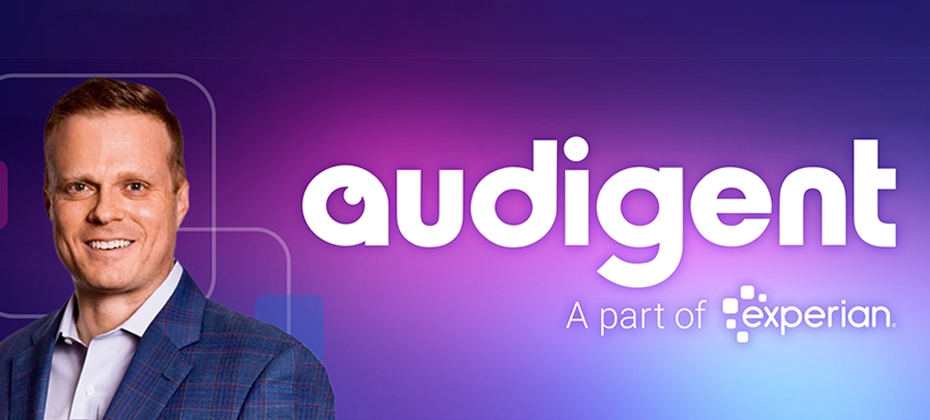
Here is a list of 8 free white papers from our Experian Vision 2012 conference: State of the U.S. Credit Markets – At Last, Signs of a Real Recovery The economy’s recovery from the Great Recession may have started slowly, but it is accelerating – and it’s genuine. Economic indicators tell the story of improving business prospects. For credit issuers, the message is real, too. Now’s the time to look with fresh eyes at your post recession lending strategies. Download this free white paper. Universe Expansion – Growth Strategies in the Evolving Consumer Market As the economy gains strength, lenders are engaging in an increasingly fierce competition to entice the best candidates to their portfolios and to grow their lending business. A variety of prospecting strategies are now available that compliment and expand on a lender’s current growth initiatives – now is the time to ensure that optimal strategies are in place and that opportunities within near-prime are not overlooked. Download this free white paper. Converting Information to Intelligence – Current Trends in Mitigating Small-Business Risks Through Analytics As former Chrysler CEO Lee Iacocca put it, “Even a correct decision is wrong when taken too late.” Portfolio managers who oversee small-business risks know this well. They realize it when they make a decision about approving or rejecting a loan request and recognize later the correct decision would have been clearer if they could have weighed additional data and used improved analytics. This white paper presents some of these latest trends affecting the small-business lending landscape. Specifically, it illuminates how companies are using the new robust data sources and analytic tools – from consortium data to rapid model customization – to maximize their interactions with small-business clients with greater accuracy. Download this free white paper. Understanding Automotive Loan Charge-off Patterns Can Help Mitigate Lender Risk Loan delinquency rates are one of the most important statistics to track in the automotive finance industry. If consumers are not repaying loans on time, it puts billions of dollars at risk. Experian Automotive has found several clear patterns that can help lenders better understand the root cause of loan delinquencies. These can be found in vehicle buyers themselves through credit scores and length of credit history; through the vehicles themselves and their own history; and through the loans themselves by understanding the impact of high loan-to-value ratios. All of these data points provide insight into patterns of where charge offs are most likely to occur and can significantly impact the strategies lenders adopt. Turning the Tide – Managing Troubled Portfolios The economy may be recovering and the credit picture improving, but lending institutions still find themselves coping with some troubled portfolios. Plus, they always need to be prepared to identify high-risk accounts. What they can discover is that turning around a challenged loan portfolio requires taking just a few basic steps. Download this free white paper. Driving Profitability and Minimizing Risk Through Portfolio Management As the economy recovers, managers of small-business portfolios must always remember that their loan portfolios are constantly changing. That’s why it’s critical for risk managers to look at their debt holders differently. They must examine more closely the behaviors of these owners, especially to predict the potential for fraudulent activity and what can be done to minimize losses. This is vital because fraud committed by small-business owners, while relatively rare, generates at least three times the impact of a conventional fraud loss. Download this free white paper. Fraud Detection in Newly Opened Accounts — Connecting Data Helps Predict Identity Theft Fraud continues to be a genuine problem and challenge. After a sharp and unexplained drop in identity thefts in 2010, fraud schemes climbed 12.6 percent in 2011, research by Javelin Strategy & Research shows. Fortunately, the latest technologies and a new Experian® weapon — Precise ID for Customer Management — offer the opportunity to improve fraud detection substantially, especially very early in the Customer Life Cycle. This paper explores how this new weapon helps detect identity theft and other fraud and how data velocity can prove the key to predicting identity theft. Download this free white paper. Overview of the Consumer Financial Protection Bureau — What’s New and What to Expect in 2012 The Consumer Financial Protection Bureau (CFPB) received authority to enforce a majority of the nation’s financial consumer protection laws in July 2011, but the new regulator’s powers were limited until President Obama made a “recess” appointment in January 2012 to name former Ohio Attorney General Richard Cordray as the first director of the CFPB. Now, the CFPB has the authority to not only enforce existing consumer protection laws but also to write new regulations for non-bank financial institutions and to supervise their activities. It is imperative that financial institutions under the authority of the CFPB ensure that they follow industry best practices and are in compliance with current federal and state regulations to prepare for future actions by the new consumer financial regulator. Download this free white paper.

Hundreds of business leaders, risk officers and credit managers are gathering this week in Scottsdale, Arizona for Experian's annual must-attend industry event Vision 2012. Over the course of three days this group will hear from dozens of experts on new ways to improve business performance and make the most informed decisions. This blog will publish regular updates from the conference; including: Experian's latest in-depth thought pieces showcasing new analytics and insights Commentary on select session topics Daily wrap-up reports from the conference This week also marks the launch of Experian TV – a daily news program produced at Vision 2012. Experian TV will report on the most interesting news, interview experts, deliver industry commentary, and seminar recaps throughout Vision 2012. Have a look at our inaugural Experian TV show:

As part of Advertising Age’s American Consumer Project, Matt Carmichael (Director of Information Projects at Advertising Age) recently reported on “How the U.S. Watches Cable.” The coverage, and supporting map/infographic, offer some revealing analysis around cable television viewership with relation to demographic segmentation, with the map providing a snapshot of viewership by County. Experian Marketing Services contributed data and analysis. “The more advertisers know about the particular qualities of an audience, the better choices they can make about which programs to support and the creative to target them with,” says Carmichael. Very true, which makes this report a great resource for marketing and sales teams. As always, great content from Ad Age’s American Consumer Project. See the full coverage here. Do any of these findings surprise you? How about for your County? Share your thoughts in the comments section below. Photo: Shutterstock

I opened a few of my daily newspapers this morning (yes, the print kind!), and pondered some seemingly conflicting messages. In the Wall Street Journal, I saw the headline “Economic Reports Fan Fears.” In the New York Times, the top business story read “In a Shift, Debt Levels are Falling,” noting that American consumers are reducing their debt. There is merit and editorial integrity in each story – no doubt. As someone who works in the financial services business, I understand that there may be different barometers and reports to gauge our collective perspective on the current economy. But, to the everyday consumer, it might be puzzling. We thought this might provide a good opportunity to remind people that, regardless of the various barometers and reports, one premise remains true: commit yourself to financial literacy. The average debt held by American consumers older than age 19 is more than $78,000. For the first time in U.S. history total student loan debt exceeds total U.S. credit card debt. Yet, most high school students graduate without having learned to balance a checking account. Young people entering the work force or going to college know how to dissect a frog, but they have never been introduced to critical life skill concepts like the power of compound interest, the cost of credit, or the importance of credit reports and credit scores in their daily lives. A basic understanding of these essential concepts empower everyone to make better decisions about money, leading to greater financial success. According to some, that in turn leads to reduced stress and even better overall health and greater general happiness. To improve your financial literacy, visit www.LiveCreditSmart.com. Photo: Shutterstock

Last month, the Network Advertising Initiative (NAI)—a coalition of more than 80 leading online marketing companies—released its 2011 annual report reviewing efforts in online advertising self-regulation. In the annual report, which is required by the NAI’s self-regulatory Code of Conduct for Online Behavioral Advertising (OBA), the NAI reviewed the practices of member companies with regards to the collection, use and disclosure of data for OBA purposes. The report identified a high level of compliance among member companies and concluded that industry self-regulatory guidelines have increased transparency and consumer understanding of OBA. Visits to the NAI website increased by 200%, with nearly 8.5 million unique visits. Of those visitors, approximately 840,000 used the NAI’s opt-out tool and nearly 2.5 million visitors went to the educational portion of the site. Photo: Shutterstock

The Death Master File (DMF) is a database operated by the Social Security Administration (SSA) that contains over 87 million records with information on persons who had Social Security numbers and whose deaths were reported to the SSA from 1962 to the present. The DMF is considered a public document under the Freedom of Information Act, and monthly and weekly updates of the file are made available through the Department of Commerce. Congress is considering legislation that would limit access to the DMF to only qualified entities. For example, government agencies, credit reporting agencies, financial institutions and medical organizations use the DMF to verify death and prevent identity fraud. At a hearing before the House Social Security Subcommittee in early February, members of the panel heard from a variety of witnesses who said that more needs to be done to secure DMF records from misuse while also recognizing the importance of ensuring access for legitimate uses. Photo: Shutterstock


